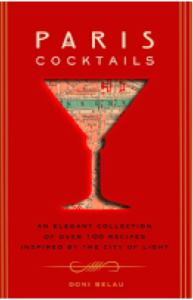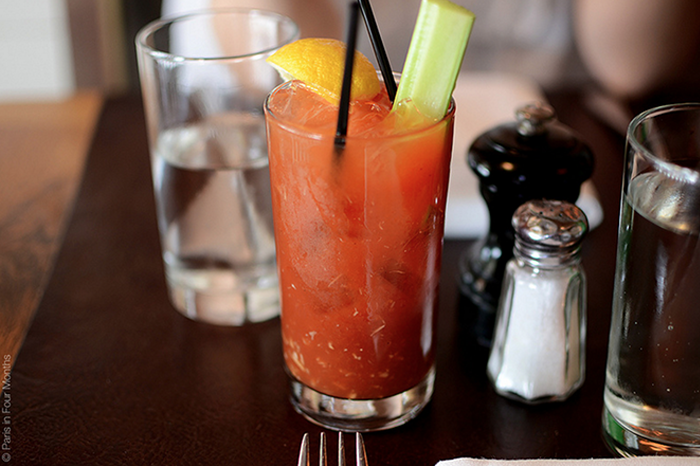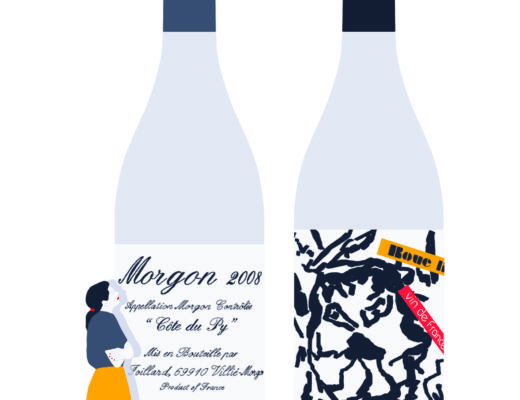Here, the author shares a bit of background to one of the world’s most iconic cocktails and how it has been updated for today’s tastes.
The classic Bloody Mary cocktail has come a long way from its creation in 1921 as a cure for a hangover to the various ingenious riffs on the recipe, which you can savor today in Paris or in your own home.
Harry’s N.Y. Bar was moved from NYC to Paris in the early 1900’s because its owner smelled prohibition in the air. A little known and somewhat controversial fact is that Harry’s head bartender Fernand “Pete” Petiot, a Frenchman, created the Bloody Mary to aid one of his regulars’ hangover. While the Bloody still works handsomely as a cure and remains the perfect Brunch drink, what most people are surprised to hear is that it wasn’t created in New York, London or Spain….it is truly a French invention.
In order to settle the score with the Ritz, Paris and the St. Regis in New York, the latter which still claims “Pete” invented it at their hotel, I had to consult with cocktail historians Jared Brown and Anistatia Miller of Mixellany. The husband and wife duo and authors of many cocktail books confirmed that Monsieur Petiot created the famous cocktail at Harry’s in Paris in 1921, and popularized it later in New York at the St. Regis where he moved after prohibition.
What’s interesting about the first recipe is what isn’t included. There’s no lime (just lemon), no celery salt, no Tabasco sauce, and no horseradish.
The original Bloody Mary Recipe, courtesy of Harry’s NY Bar (used with permission from Cider Mill Press & Paris Cocktails)
• Salt, cayenne pepper, and
• 6 dashes of Worstershire
• Juice of 1/2 lemon
• 2 oz. vodka
• 2 oz. tomato juice
Method: Create this in the glass starting with 4 dashes of salt, 2 of cayenne, and 2 dashes of black pepper. Add the Worstershire, lemon, vodka, and finally the tomato juice.
Be sure to use ground not cracked black pepper and do not add celery salt! Originally there was no garnish, and to this day at Harry’s you won’t get a wedge of lemon, or a celery stick, or, God forbid, a pickle! They do add Tabasco sauce now, so feel free to add a dash or two if you prefer, but why not give it a sip first?
Cut to 2015 when I discovered some new mixology talents who’ve taken that original recipe and flipped it on its head for some surprisingly delicious results. This winter, I toured 55 bars in Paris for my newly released book, Paris Cocktails. What I found was both surprising and delicious, especially with regard to the Bloody Mary.
Valentin Calvel, one of the most talented bartenders in Paris, created a fresh version for the Apicius bar and restaurant, which serves them by the handful at lunch. Try one and you’ll see why. His is very different from your standard Bloody because it uses fresh tomatoes (and is impossible to put down).
The Incredible L’Apicius Bloody Mary courtesy of Apicius and Cider Mill press.
• 1 cup of cherry tomatoes
• 4 drops Tabasco Chipotle flavor
• 2 dashes white balsamic cream
• 1. oz. cranberry juice
• 3/4 oz. vodka
• 2 turns of a pepper mill
• 3 drops Memphis BBQ bitters by Bitter End
• Celery salt
Method: In a Boston shaker, crush cherry tomatoes, add Tabasco Chipotle, balsamic cream, cranberry juice, vodka, 2 turns of the pepper mill, 3 pinches of celery salt, and the Memphis bitters. Shake vigorously for 20 seconds, double strain, and serve in a chilled martini glass.
Serving suggestion: Decorate the rim with celery salt or spicy Tabasco salt, 1 cherry tomato, and one grind of the pepper mill (white pepper is preferred). White Balsamic Cream is available from gourmet food distributors online.
The other wildly interesting version I had during my sampling of over 150 cocktails in Paris was the Bloody Celery, a winter version of the Bloody created by Amanda Boucher at Pas de Loup. Amanda, a midwestern girl and one of the most talented bartenders in Paris, reinforces the notion that the French prefer not serve vegetables out of season. So in winter, she dehydrates a tomato or two and grinds them down into a powder. She then uses fresh celery juice as her base with the vodka and the spices and rims half the glass with a beautiful red ring of dehydrated tomato, which tastes 99% as fresh as the best August tomato from your garden. Amanda is one of the few bartenders in the world who uses molecular gastronomy techniques in her craft cocktails.
After learning more than I ever thought one could know about the history of cocktails as well as the new craft movement that has taken Paris by storm, it was interesting to taste my way through illustrious Parisian cocktail history via the humble yet ever delicious Bloody Mary.***
WIN A COPY OF PARIS COCKTAILS:
To enter to win your own copy, leave a comment below sharing your favorite cocktail. As an extra entry, leave a second comment about your favorite Paris cocktail bar and why you love it. A winner will selected at random on October 25th! Good luck!
UPDATE: Congratulations to Catherine Bennett!

Doni Belau is the founder and creator of Girls’ Guide to Paris
and author of the newly released Paris Cocktails by Cider Mill Press.
She survived tasting over 150 drinks in Paris with her liver in tact.
Key tip: just two sips. Click here to buy the book!












